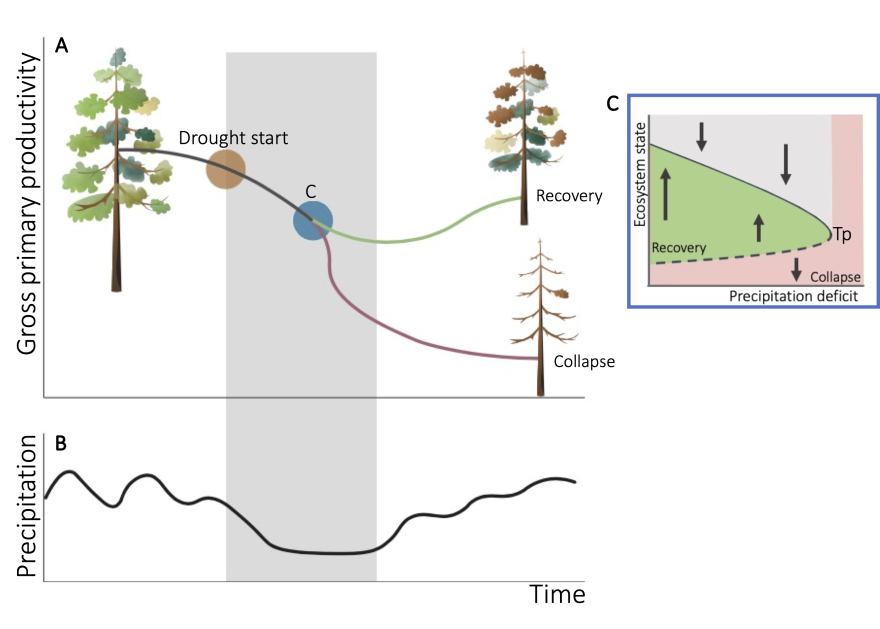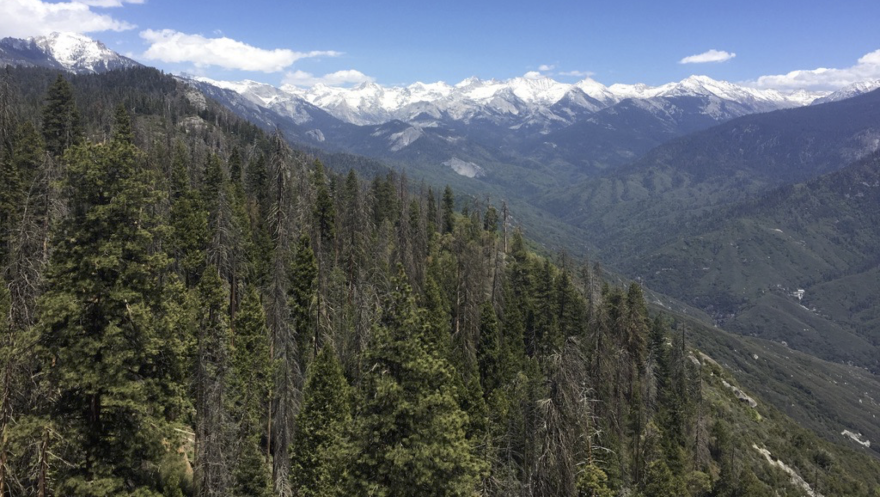Researchers have found a way to predict whether or not a forest will survive based on drought conditions – information that can help forest managers deal with climate change.
The researchers from the University of California Davis looked at a drought that caused the loss of tens of millions of trees in the Sierra Nevada forest from 2012 to 2015. In the early years, the trees were doing fine, despite drought conditions. But by 2015, 80% of them were essentially dead.
“We could see how the drought was causing changes in its (the Sierra Nevada forest’s) behavior—and actually, how it could lead to the collapse of the ecosystem,” Jessie Au, a researcher on the study and a postdoctoral scholar in the university’s department of plant sciences, said.
If there’s a drought – much like when someone forgets to water a plant – trees will stop growing leaves. Without those leaves, it becomes harder and harder for photosynthesis to occur – until there’s a tipping point when the trees lose their ability to store and convert carbon dioxide.

“Even when the rains come back, if you don't have any reserves to even perform the basic functions, your (trees) are effectively dead,” Au said. “The water stress depletes your carbon reserves.”
These changes can be hard to see at first. Au compared drought to hunger – if a human goes two or three days without food, they will be very hungry, but won’t die. After a few weeks without food – or in the case of trees, without water – death can quickly set in.
“It takes a while for all these reserves to break down,” she said. “It highlights that drought has a delayed effect and you don't necessarily see it instantly.”
Now, the researchers have come up with CARDAMOM, a system that shows in real time the point past which a forest becomes so water-stressed that photosynthesis stops. The system's spice-inspired nickname is a mashed-up version of the phrase "Carbon Data Model."
The model relies on the historical climate data of a particular forest, like the Sierra Nevadas, to make geographically-specific predictions. And it’s applicable to all types of ecosystems – not just forests. Once researchers have a dataset to work with, they can see how much photosynthesis is going on that ecosystem given the current amounts of carbon dioxide, water and sunlight there – and see how it would change if a drought started and/or continued.
Au said it’s unlikely that researchers can save threatened trees with this method or get more water to dying forests. Still, understanding a forest’s stress level can help land managers direct their resources to forests that have a better chance of survival.
“It's to help us better manage or assess the vulnerability of forests to then think about, ‘OK, well, how best can we use the various lands that we have?’” she said.
From an industry standpoint, this information is important as more industries rely on forests to offset their carbon emissions.
“If you suddenly lose a lot of trees, you lose your ability to take in that atmospheric carbon dioxide, which is going to have really big implications if you are hoping to combat some of these emission problems,” she said.
The researchers hope to apply this to other forests to determine their vulnerability to drought, especially in places like Colorado that receive significant levels of precipitation and snowpack.
For the climate’s sake, Au hopes more forests can avoid getting to that tipping point when photosynthesis fails.
“Trees would be one of the biggest absorbers of carbon dioxide from the atmosphere given the size of them, the lifetimes that they live. They can store things,” she said. “Photosynthesis is like the driving force behind our ability to tackle any type of carbon emissions.”
This story was produced by the Mountain West News Bureau, a collaboration between Wyoming Public Media, Nevada Public Radio, Boise State Public Radio in Idaho, KUNR in Nevada, KUNC in Colorado and KANW in New Mexico, with support from affiliate stations across the region. Funding for the Mountain West News Bureau is provided in part by the Corporation for Public Broadcasting.






